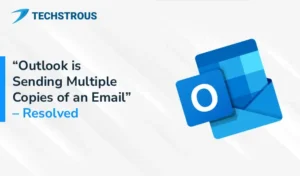Site structure is one of the most important elements to ensure an effective SEO of your website. However, most people do not know how to curate their web pages for maximum results. In this article, we will cover complete information about website content structure and how you can suitably organize your web content.
Overview
A website structure is the system of organizing your website’s content. It consists of properly categorizing all the content for easy navigation and linking the relevant and related items. A good structure makes it easy for both users and crawlers to reach a particular page with minimum friction.
An unstructured website fails to deliver the required ease for reaching a specific content. Moreover, it negatively impacts performance of the website. Consider it like an untidy room where finding anything is quite difficult.
Why Does a Site Structure Required?
A neat website content structure is beneficial not only for users but also from an SEO perspective.
#1. It helps index all your web pages. Google bots can easily crawl to every page of your website. Therefore, all important pages will be listed on Google’s server. Hence, it appears in Google SERP in response to a user’s query. Moreover, it enables Google to identify relevant and most important pages.
#2. It makes it easy for visitors to navigate your website. They can access the desired page easily which further improves user experience and credibility. Along with that, it reduces bounce rate and enhances your website’s ranking.
#3. Managing the content of your site will become easy. Categorizing the blog appropriately eliminates unnecessary cluttering. Also, it helps free up the website space by removing unnecessary or outdated content. All these things further result in enhanced performance.
What Does a Good Website Structure Mean?
A website with good structure shows all the below attributes:
- Properly categorized content and interlinked relevant pages
- Any page on the website is accessible by a minimum number of clicks required.
- No outdated content or unauthorized information.
Best Practices for Structuring Your Website
To improve the site structure, our objective is to organize the web content as per the above-mentioned points. By following the below practices, you can properly improve the architecture of your website.
The flat structure encourages swift navigation:
A flat landing page structure is helpful for improving the SEO of your website because it enables users as well as Google crawlers to reach a page in 4 or fewer clicks. On the other hand, in Deep Structure, one will have to click more than 4 times to arrive at the desired content. Pages are unevenly linked which makes it hard to identify the important page.
A flat structure helps Google bots to find all pages of your website. Moreover, in this architecture, the authority flows from the page with maximum links to the one with minimum links.
Make use of categories and tags:
Categories and tags are used to put relevant pages in one place. Thus, users can easily find their required blog or content. Instead of randomly uploading content, putting it in a suitable category makes it easy to maintain the integrity of information. While naming the categories or tags, make sure that it is related to the content inside them.
Internal linking associates relevant topics:
Internal linking is the most important element of a basic website structure. It not only allows crawlers to associate content but also allows visitors to get a comprehensive understanding of the topic. The linking strategy should be that the links must pass from a higher authority page to a lower authority page.
Consider it like the homepage is linked to categories which are further linked to blogs or other content. Besides that, a properly interlinked site defines a path for bots to crawl and helps them identify the most important pages.
Sitemaps increase crawlability:
A sitemap is a structured list of the entire website’s content. It is a guiding map instructing crawlers on the path of every page. It helps bots to access the page which is hard to reach. Thus, a sitemap significantly increases crawlability.
Use an HTML or XML sitemap to properly define the paths of all the web pages. Additionally, you can block the crawlers from visiting unnecessary pages by using the robots.txt file.
Removing old content prevents cluttering:
Eliminating old or outdated content enhances your website performance and overall SEO ranking. It prevents keyword cannibalization and encourages better internal linking.
In terms of website structure, it establishes relevant information architecture and removes complexities in the website. You can easily link your pages according to relevancy and authority and ensure an effective structure.
Conclusion
A site structure explains how your website’s content is categorized and linked. It is analogous to how items are placed in a room. You can either organize your room by placing items in suitable places or let it clutter up. Some practices to improve website content structure are:
- Use flat structure
- Categorize content properly
- Adopt a relevant internal linking strategy
- Ensure to use sitemaps
- Remove old or underperformed content
Frequently Asked Questions
What is a site structure for SEO?
A site structure for SEO is the architecture of your website which means how you organize your website content. It makes it easy for both visitors and google bots to navigate your website.
How to improve website structure?
You can improve your website content structure by implementing the following strategies:
- Use flat structure
- Categorize relevant posts and pages
- Interlink associated content
- Remove outdated blogs
- Use HTML and XML sitemaps
Why is a good website architecture needed?
A good website architecture helps improve SEO, user experience, and crawlability. It makes the site clean and easy to navigate.




